I normally don’t review disposable masks. In fact, on this website, I have never once done such a review. However, along with the reusable masks that I received from Airpop recently, I also received some Airpop Light SE and Airpop Pocket masks to review and share my impressions of.
These two masks fit into a grey area between being disposable and reusable. Sure, they are disposable, but they also have an estimated lifespan of around 40 hours. This makes them fit into a rather unique segment of the market where they are not truly disposable but rather, reusable for a short period of time.
I have used a LOT of disposable masks over the years and my biggest complaints are always with their cost and fit. Since disposable masks are intended to be cheap, it’s hard to find one that fits well. The wire nose pieces are often too small (to cut costs), the earloops are made from low-quality materials, and the seal itself is weak.
The other issue is cost. While disposable masks are cheap, they quickly add up. If you are replacing your masks as often as you should be (every couple of days in the case of pollution protection), you quickly rack up costs – even if an individual mask is only a couple of dollars.
I’m curious if the Airpop Light SE and Pocket masks can improve on either of these issues. After reviewing Airpop’s reusable masks, I am also curious to see if these mask variants can bring the benefits of Original and Active masks to these disposable versions.
With that being said, I want to get straight into reviewing both the Airpop Light SE and Airpop Pocket. I will begin by discussing the most important factors of filtration and fit before moving on to comfort, lifespan, cost, and my experiences with the mask.
As always, please keep in mind that my experiences are just that. Everyone has a different face and I can’t judge whether or not a mask will fit you correctly. All I can do is share my own experiences and hope that you find them useful. If you have your own thoughts or experiences to share, please feel free to do so in the comments below.
This post contains affiliate links. For more information, please refer to my affiliate disclaimer. I was sent a product for review, but the article is not sponsored. All opinions expressed in this post are my honest thoughts. I only recommend products that I genuinely believe in.
Information on this blog is for informational purposes only. Readers are encouraged to confirm the information herein with other sources. Furthermore, this information is not intended to replace medical advice from professionals. This website assumes no responsibility for the accuracy of the information, and information is subject to change without notice. Devices mentioned on this website are not medical devices and do not guarantee protection.
Purchase Airpop Masks. Save 20% with ‘Breathesafeair20’
Filtration
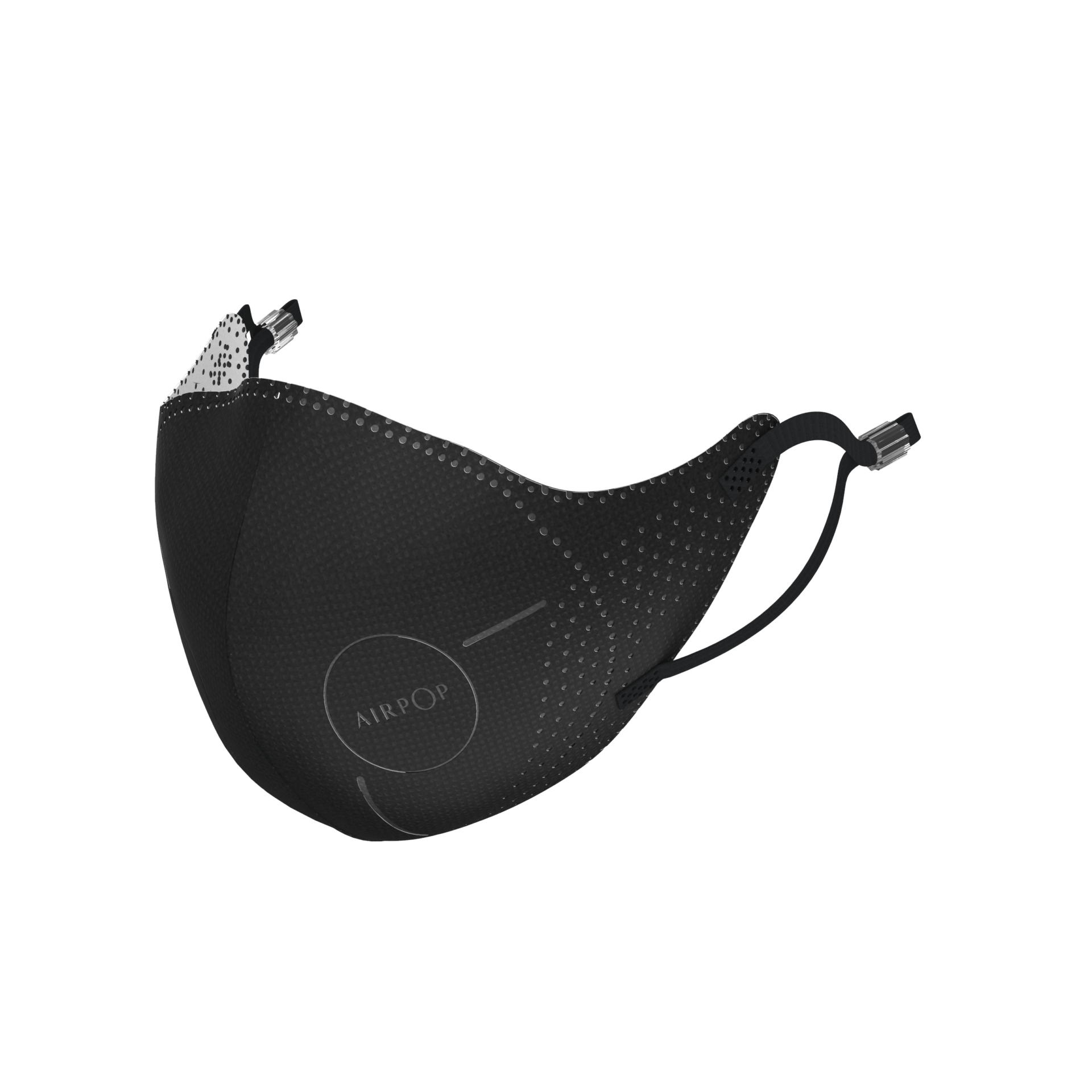
Airpop Light SE
Both the Light SE and Pocket have undergone a range of testing. One thing that Airpop does very well is comprehensive testing and then providing all of the test data to the public. I’ve reviewed a lot of masks and it’s usual for each company to have lab testing carried out by one or (at most) two labs. However, Airpop has had a multitude of tests carried out by labs across the world.
All of the information that I have referred to in this section of the article is publicly available here. While I do believe these things should always be public and that such extensive testing should not be out of the ordinary, I do commend Airpop for the level of testing their masks have undergone as well as their transparency.
The Pocket and Light SE both use the same filter media and therefore their filter results are very similar. For this reason, I will be referring to both masks as one for this section of the article.
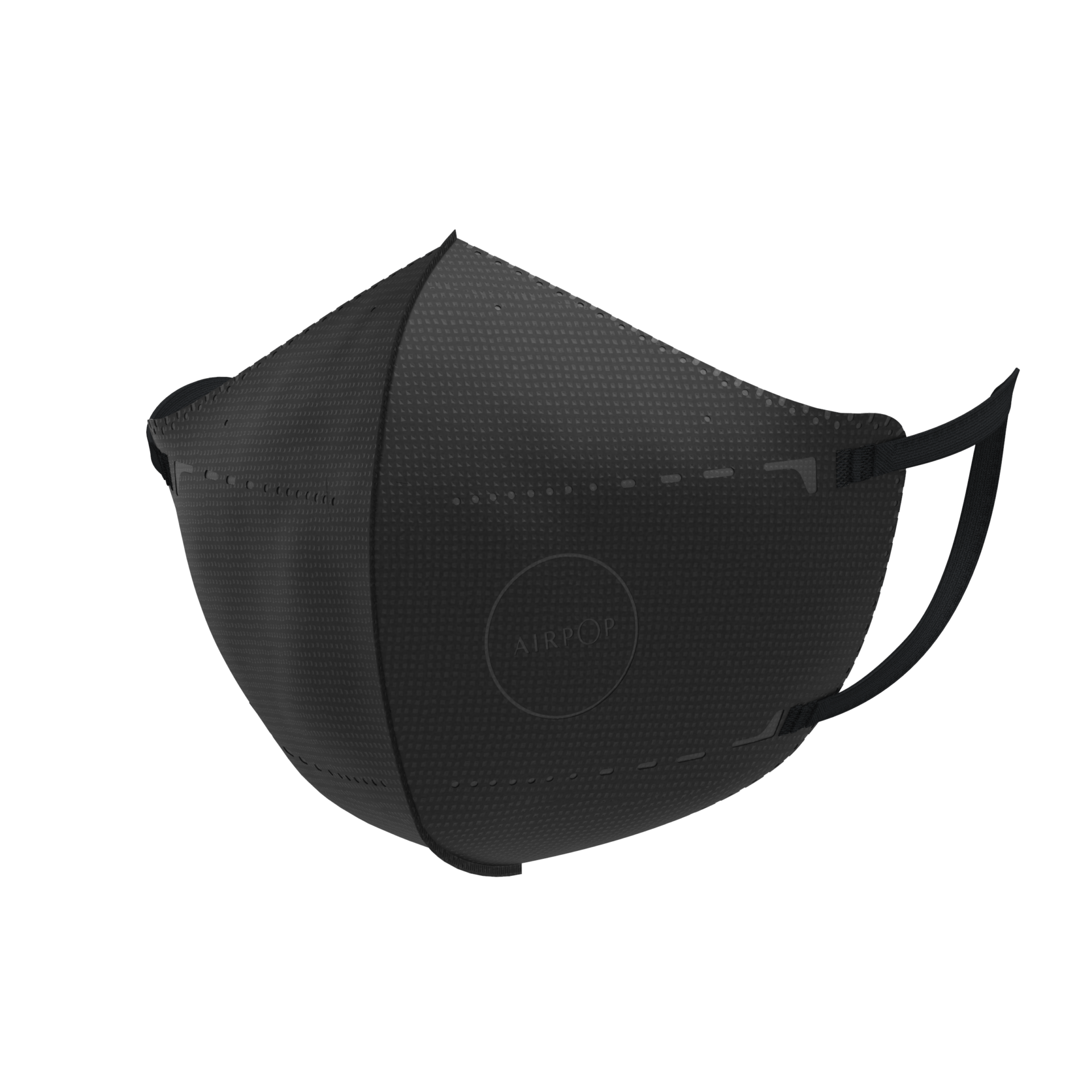
Airpop Pocket
Both masks have obtained the KN95 certification when tested by CNAS accredited testing facilities in China. During the testing, both masks were tested untreated and with heat & humidity pretreatment. Across over 30 samples, the lowest recorded filtration rate was 98.7% indicating that the filter media in the masks is capable of filtering ≥ 98.7% of NaCl particles at the MPPS.
This data only applies to the filter media itself and therefore it represents the theoretical filtration of a mask. In a real-world situation, fit and the leakage need to be taken into account also. For this reason, KN95 testing also analyses TIL (total inward leakage) on a range of test subjects. Out of 50 tests (with varying actions, masks and test subjects), the KN95 standard requires that on at least 46 samples the TIL is less than 11%.
On top of this, out of the 10 test subjects (people wearing the mask), 8 must have an average TIL of less than 8% across the actions that they need to perform. These actions include common head movements such as looking left, looking right and talking. While this may sound complex, it essentially means that both masks have been tested on people performing a range of actions and passed the leakage requirements for the KN95 standard.
Further testing has been carried out by Intertek in New York and has shown a filtration rate of ≥ 97.7% before washing and ≥ 97.1% after being washed 10x with 70% alcohol wipes (as per Airpop’s cleaning instructions).
BSI (British Standards Institution) carried out another set of tests using sodium chloride particles at 95 l/min. This testing confirmed similar numbers to the KN95 testing, with the highest penetration across the mask samples being 1.44%.
| Mask Model | KN95 Tests | Intertek | BSI |
|---|---|---|---|
| Airpop Pocket | ≥ 98.7% | ≥ 98.0% | ≥ 98.6% |
| Airpop Light SE | ≥ 98.8% | ≥ 98.0% | ≥ 98.5% |
| Mask Model | Aitex | Intertek* | BSI* |
|---|---|---|---|
| Airpop Pocket | ≥ 98.0% | ≥ 99.0% | ≥ 98.8% |
| Airpop Light SE | ≥ 99.0% | ≥ 97.1% | ≥ 98.5% |
* Testing after washing. In the case of Intertek, 10x cleaning cycles with 70% alcohol wipes. In the case of BSI, 5 full wash cycles including wetting, washing, and rinsing.
Yet more filtration testing has been carried out by Swiss Quality Testing Services and Aitex in Spain. These again reflect the results mentioned above and I don’t think they need to be discussed in detail as there is already ample evidence showing the filtration capabilities of both the filter media and mask (as per the KN95 tests).
The breathability of the masks was also well within the requirements set by the KN95 standard. The KN95 standard requires a pressure drop (inhalation and exhalation resistance) of ≤ 350 Pa for inhalation and ≤ 250 Pa for exhalation. The filter media used on both the Light SE and Pocket had a resistance of ≤ 96 for all tested samples.
This means that when fitted correctly both masks are still very breathable and will be significantly easier to breathe in than the majority of disposable masks – especially those that use melt-blown filters.
Conclusion (quick answer!)
If this section has been difficult to follow, I apologise. It’s hard to condense so many different test results and data points. If you want a quick answer, both the Pocket and Light SE have displayed a consistent filtration rate of > 97%. The masks also retain this > 97% filtration rate even after 10 washes with 70% alcohol wipes. Finally, both masks should be substantially more breathable than standard N95, KF94, and comparable respirators.
Purchase Airpop Masks. Save 20% with ‘Breathesafeair20’
Fit

Light SE
The most unique aspect of the Light SE that distinguishes it from other disposable masks on the market is the use of a silicone nosepiece. Where nearly all disposable masks rely solely on a wire-nosepiece, Airpop instead opts for silicone on this model.
Unlike the reusable masks from Airpop, the Light SE does not use a full-face silicone seal. Rather, the silicone is only located at the top of the mask, near the bridge of the nose. This is the most common point of leakage on masks and it is designed to combat air escaping near the wearer’s nose.
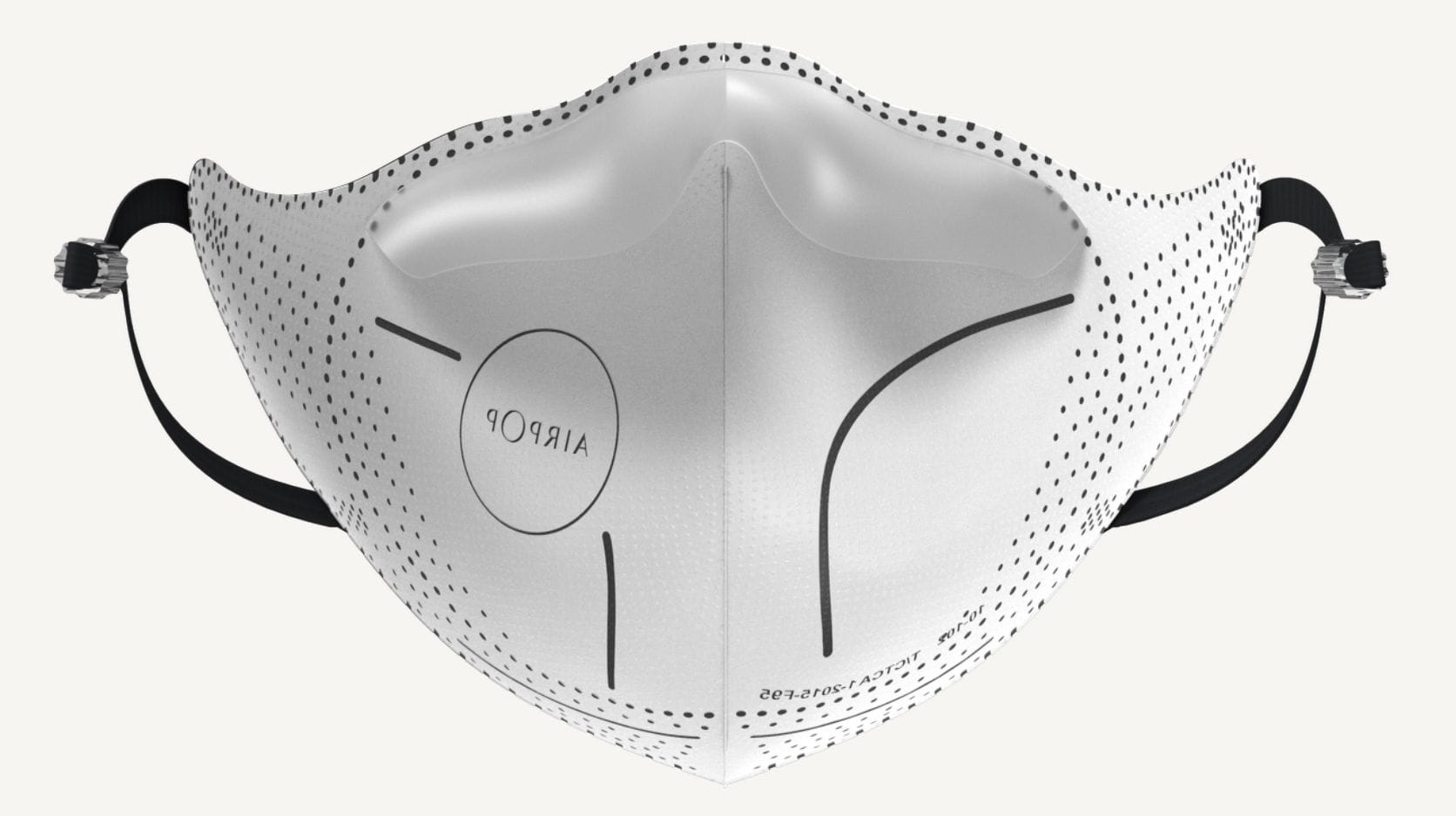
To get the best fit, I found that the mask should be placed high up on my face. To reduce leakage, I placed the tip of the mask between my pupils. Usually, masks sit level with the bottom of my eyes, but with the Light SE, I was able to achieve a significantly better fit by placing the mask about 1cm higher on my face.
This means that the bottom of the mask sits only just under my jaw. It sits about 2cm underneath my jawbone. This fit feels rather precarious and I thought that it would lead to the mask shifting when I speak. However, I found this to not be the case.
If I open my mouth wide, such as when yawning, the mask will shift and need to be adjusted. When talking normally, I discovered that the mask actually sits in place quite well. Even after going to a cafe and talking for an hour while wearing the mask, I found that only minor adjustments were needed every 20 or 30 minutes.
The silicone nosepiece does a good job of minimising leakage at the top of the mask. However, only when it is fitted correctly. I noticed that when the Light SE was not in the perfect position (top of the mask level with my pupils), there would be a lot of leakage. Where a lot of masks will have minor leaks when they are slightly out of position, the Light SE either seemed to be fully sealed or not at all.
With that being said, if you are able to fit the mask correctly it creates a very good seal. In fact, I would say that this is the best fit that I have experienced with a consumer-level disposable mask (KF94, KN95, etc. Not including fitted N95 respirators).
To achieve this fit I had to tighten the earloops a lot to make sure that the mask was being pulled towards my face tightly enough to create a seal. While this allowed me to get a good seal, it did cause discomfort over time as the earloops put a lot of pressure on my ears.
Overall, the Light SE has the best fit of any disposable mask (not including fitted N95 respirators) that I have tried thus far. However, the mask requires a lot of adjustment to find a good fit – if the mask is anything but fitted correctly it leaks a lot. There is also the issue of comfort regarding the earloops. I would definitely recommend getting a headband for this mask.
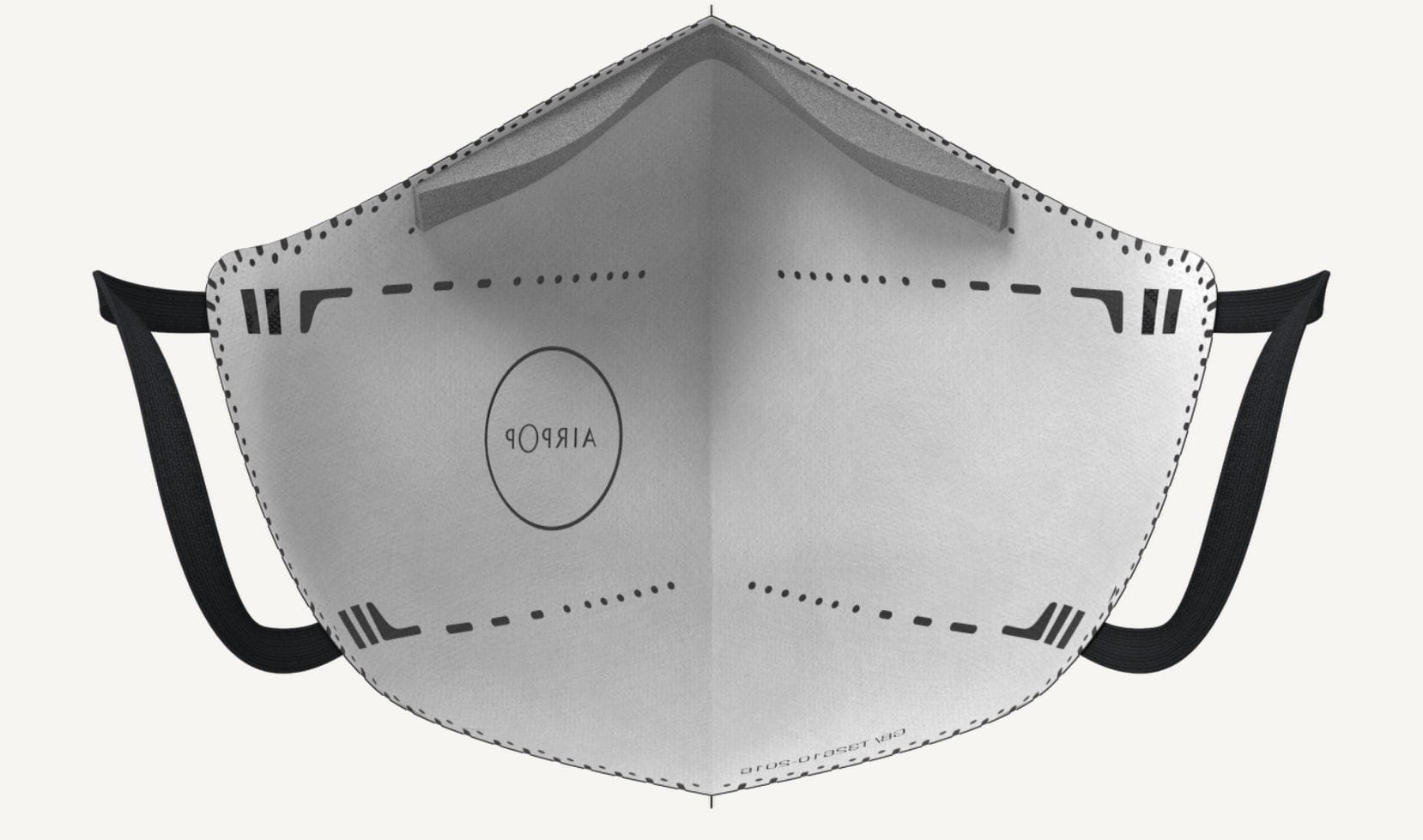
The biggest difference with Airpop’s Pocket mask is that instead of relying on a silicone nosepiece they opt for a strip of contoured memory foam instead. On top of this, the earloops don’t have an adjustment slider. The Light SE is also a more triangular mask, as the straps connect to the mask not on a flat surface, but on a point.
I tested the Pocket after wearing the Light SE for a few weeks and I noticed immediately that the Pocket is more comfortable for daily wear. While the Light SE was able to seal better, the Pocket’s use of memory foam means that the mask doesn’t need to be as securely fitted to provide a good fit. This meant that the earloops on the Pocket caused me a lot less discomfort.
In saying this, I was never able to get a full seal with the default earloops. This was due to the fact that they can’t be adjusted in any way. With the earloops in their normal state, I could always feel some air escaping along the top of the mask (both where there was and wasn’t memory foam).
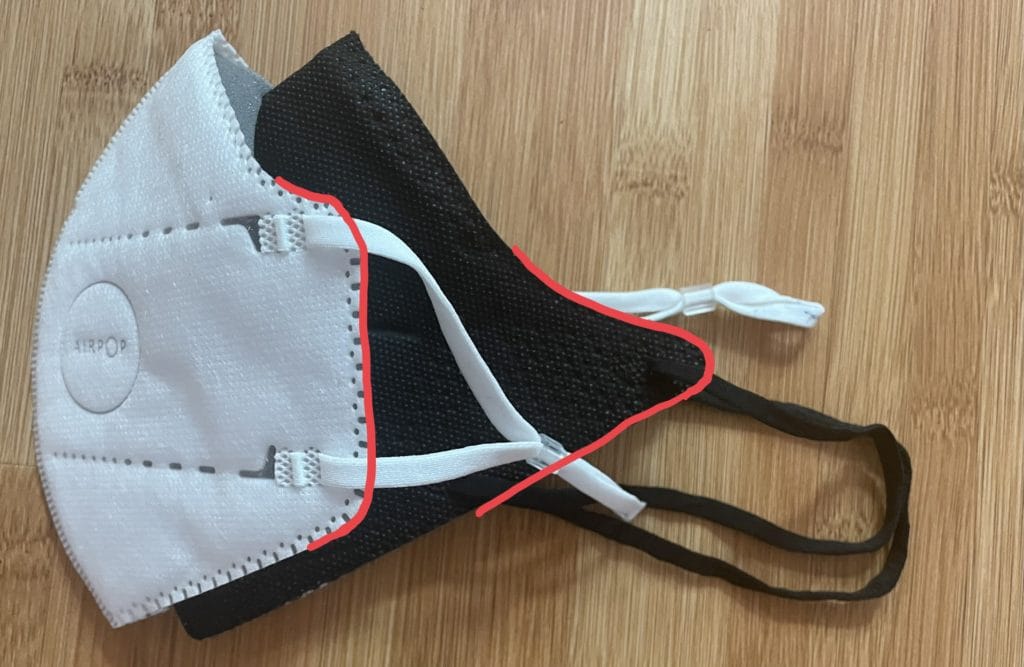
Pocket on left, Light SE on right. Adjustment beads were taken off the Light SE and placed on the Pocket.
I noticed that when I pulled the earloops tight these leaks greatly decreased. For this reason, I decided to pull the earloop beads off the Light SE and put them on the Pocket instead. While the straps on the Pocket are slightly thicker, it’s possible to fit the beads on it. With this adjustment made, the Airpop Pocket fit significantly better – I could seal the mask to the point where I would only feel leaks when breathing very heavily.
While I understand that the Pocket is supposed to be Airpop’s most affordable mask, I believe that these beads should be included. For me, simply adding these small pieces of plastic changed the fit from one that leaked a lot of air to one that sealed with very few leaks. For anyone considering purchasing the Pocket, I recommend finding some small beads that you can use – you may already have some from another mask that you have!
Other than the nose piece and the earloops I found the Pocket to feel very similar to the Light SE in regards to fit. I think that most people will find the Pocket more comfortable, however, as it’s easier to don correctly, the nose piece is softer, and the earloops can be worn looser while achieving a similar seal.
Purchase Airpop Masks. Save 20% with ‘Breathesafeair20’
Comfort
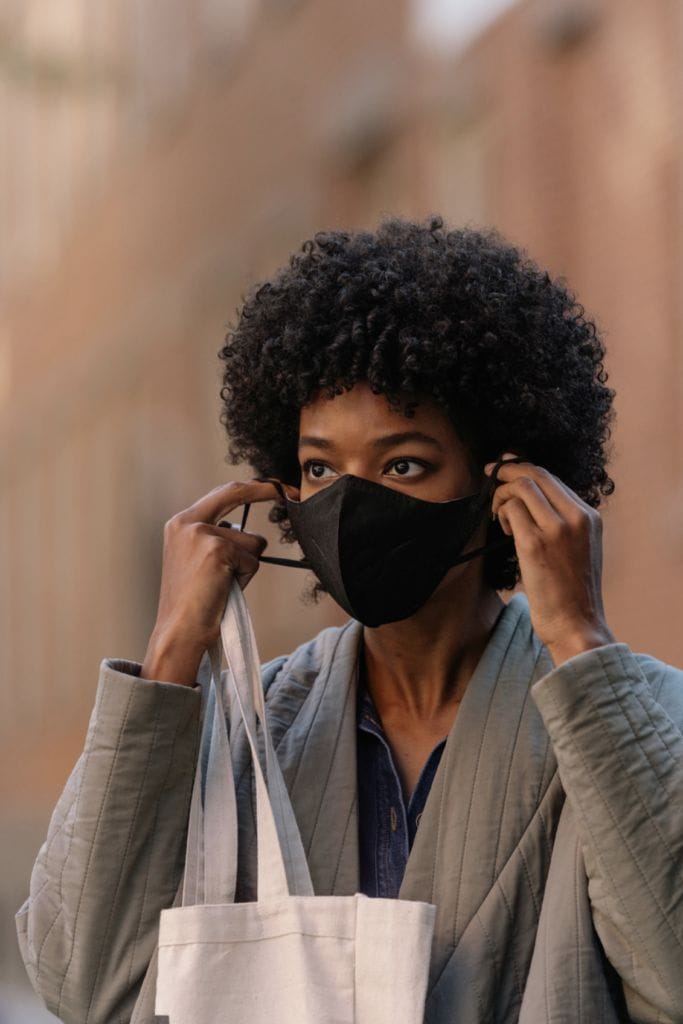
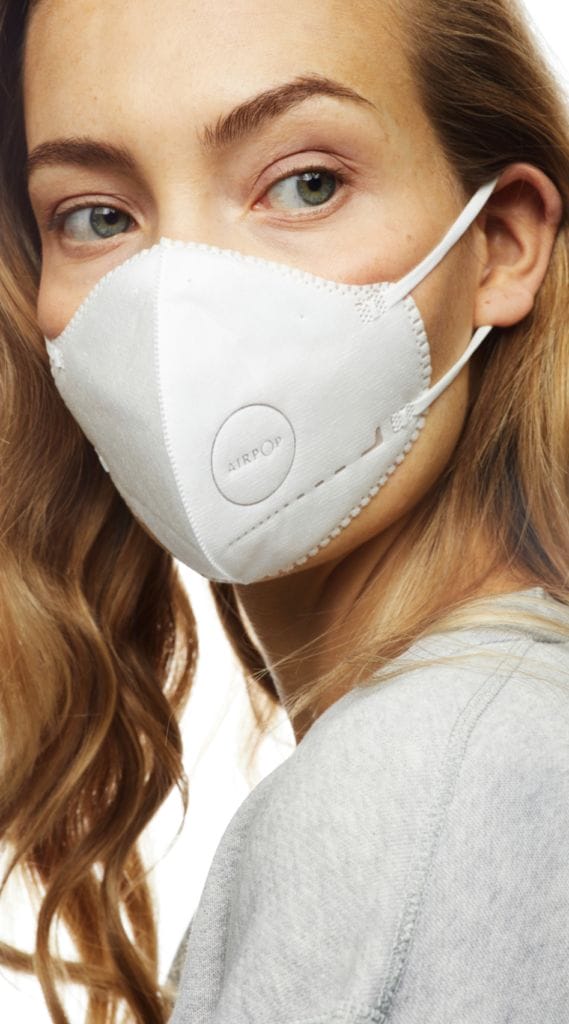
While filtration and fit are the most important aspect of any mask, comfort is realistically the factor that will often determine whether or not I wear one mask over another mask. For that reason, I consider comfort to be the third ‘pillar’ for masks. Any mask that can satisfy these three pillars (filtration, fit and comfort) is easy to recommend.
Light SE
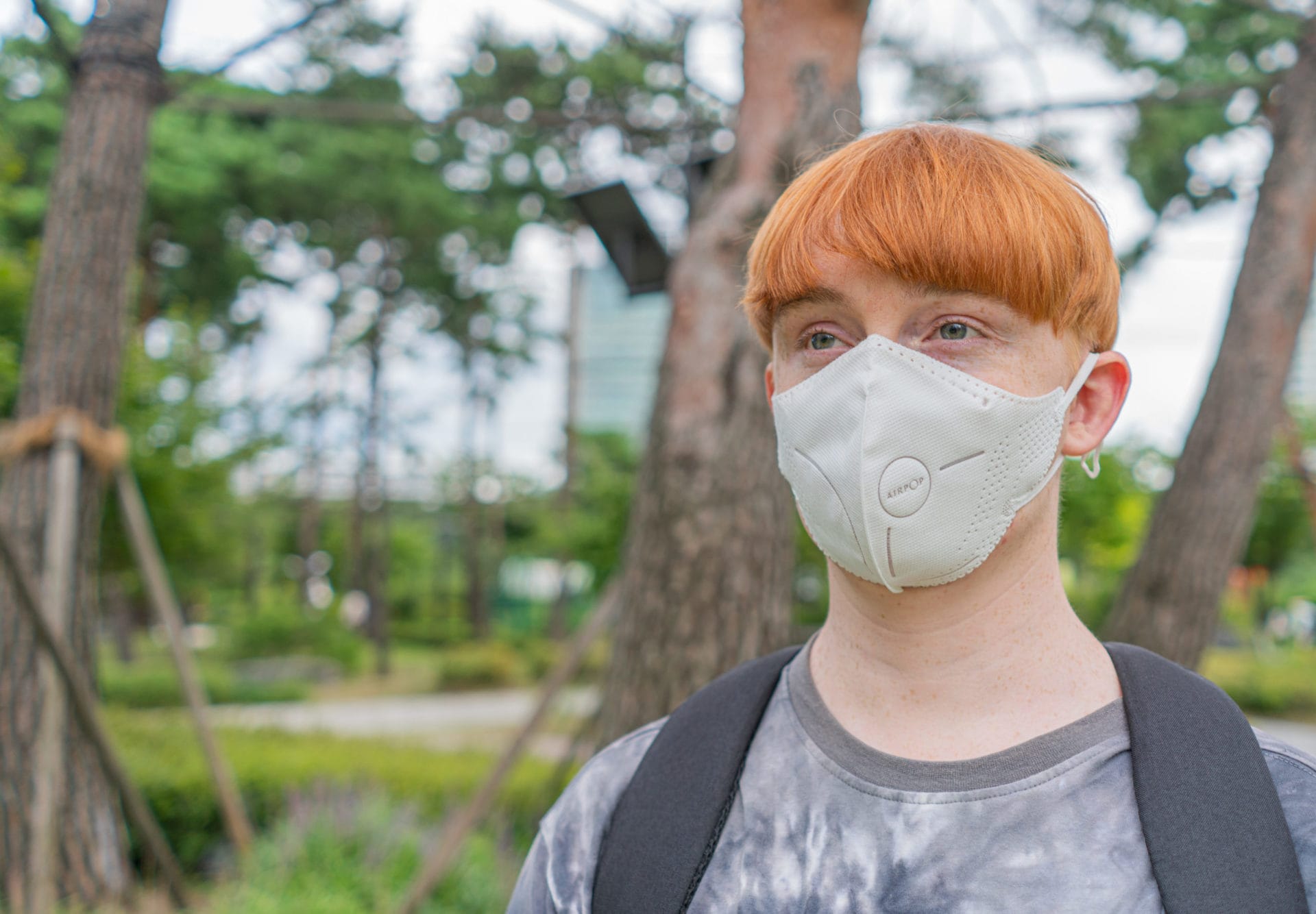
As I’ve already alluded to, the Light SE is a comfortable mask with the exception of the earloops. While the earloops were comfortable for shorter periods of wear, they would become painful after I wore the mask for a few hours. I do pull the earloops very tight, but this was the only way I found to fully seal the mask.
When it comes to breathability, the Light SE performs well. While it isn’t as breathable as nanofibre masks such as Happy Masks and the Craft Cadence Nanofibre Mask, it is more breathable or similarly breathable compared to most other masks using melt-blown filters.
I found breathability to be similar to standard disposable KF94 masks. The difference is that I can never get the standard KF94 design to fit properly, and therefore there are always some leaks. The Airpop Light SE provided similar breathability to a KF94 mask but is significantly more breathable than most N95 respirators.
Filter collapse or filter inhalation (when the filter gets ‘sucked in’ when you breathe) is not a major issue on the Light SE. The mask has a beak design, and the materials used are quite firm. Therefore, while the sides of the mask will pull against your lips when you inhale, the beak of the mask never gets pulled in.
A lot of masks suffer from filter collapse and it can hurt the overall comfort of a mask – especially when exercising as more airflow is required and a mask that collapses can not only limit the air that is drawn in but can also make breathing very hard.
In my review of the reusable masks from Airpop, I mentioned that I had some minor skin irritations from the silicone used on the mask. While the silicone has all passed safety tests and is proven to be safe, I did experience some irritations – likely due to the fact that I have very sensitive skin. They weren’t enough to stop me from wearing the mask, but they were there.
With the Light SE I have not experienced the same issues. Perhaps because the silicone is limited to the nose bridge area. Either way, this wasn’t an issue that I encountered with this Airpop mask.

My experiences with the pocket were similar to the Light SE simply because the masks are largely the same. Breathing resistance between the masks is almost identical, as is the lack of filter collapse. Similar to the Light SE, the Pocket performs well in regards to both of these factors.
The biggest difference is the contoured memory foam nosepiece. Not only does it cause less skin irritation (although this is an issue that many people won’t encounter), but the foam is softer and therefore more comfortable. Further, the foam is less likely to leave an imprint on your face when doffing the mask.
The second notable difference with the Airpop Pocket is that the earloops are slightly thicker and are not adjustable. As I mentioned earlier, I took the earloop beads off one of my Light SE masks and added them to the earloops on the Pocket to get a better fit. Even with the loops tightened, I found the earloops on the Pocket to be more comfortable.
This is for two reasons – firstly, the loops on this mask are both thicker and softer. Secondly, I found that the earloops didn’t need to be tightened as much as with the Light SE. I was able to get a good seal with the earloops significantly looser than on the silicone mask.
Purchase Airpop Masks. Save 20% with ‘Breathesafeair20’
Lifespan
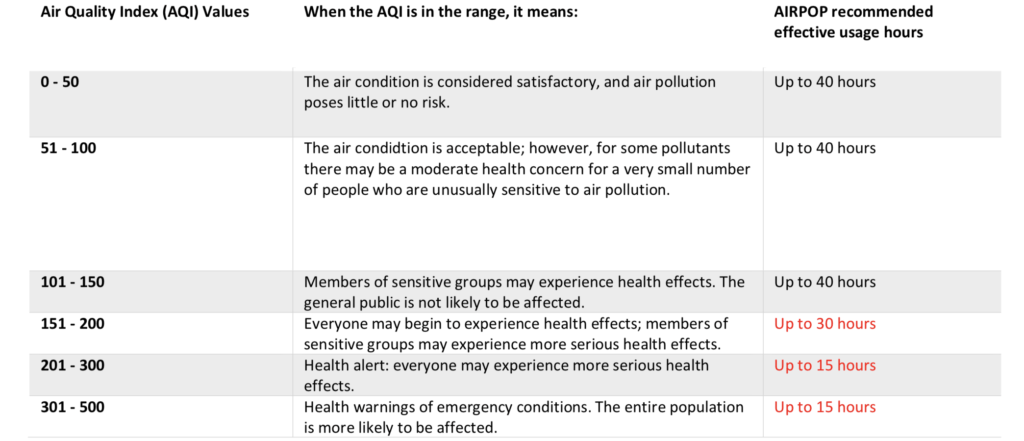
Estimated lifespan.
Both the Airpop Pocket and Light SE have an estimated lifespan of 40 hours of wear. This means that if you are wearing them for work hours (8 hours per day) they should last a full work week.
Of course, if the masks get damaged before this time they should be replaced. If they are worn on days with high pollution levels (such as an AQI over 150), then it’s likely that they will need to be replaced more regularly. If the masks become significantly more difficult to breathe through, consider replacing the mask.
While the Light SE and Original can be washed following the methods mentioned on Airpop’s website, I would recommend avoiding washing when possible. Since the filters are melt-blown, they will lose filtration efficiency when washed.
Intertek testing showed that > 98% filtration efficiency can be retained when cleaning the masks with 70% alcohol wipes. BSI testing indicated that the masks can also be hand washed and machine washed (on a light cycle) while retaining > 98% filtration efficiency after 5 washes.
However, I would always recommend using alcohol wipes as machine washing can damage masks. Further, extensive testing has been done on alcohol wipes as a mask cleaning method and they are the best method for retaining filtration efficiency.
Purchase Airpop Masks. Save 20% with ‘Breathesafeair20’
Cost
The Airpop Pocket can be purchased in packs of 2 or 4 for $13 and $20 respectively. The case costs a further $7 and will allow you to protect your masks rather than simply sliding them into your pocket or bag.
The Airpop Light SE can be purchase in a range of packs. The masks can be purchased individually for $7, and also in packs of 4, 8, 12 and 20 for $25, $44, $60 and $90 respectively.
| Mask | 1 | 2 | 4 | 8 | 12 | 20 |
|---|---|---|---|---|---|---|
| Light SE | $7 | – | $25 | $44 | $60 | $90 |
| – | $13 | $20 | – | – | – |
There is up to a 44% discount for anyone that purchases the larger, bulk packs of Light SE masks. If you do decide that the Light SE is a good mask for you, these packs allow for significant savings. However, I would not recommend buying any masks in bulk until trying them for yourself.
Purchase Airpop Masks. Save 20% with ‘Breathesafeair20’
Conclusion

Both the Airpop Pocket and Airpop Light SE are good choices of masks for everyday wear. While I would still consider them disposable masks, they have a significantly longer lifespan than standard disposable masks that should be replaced daily (even if they often aren’t).
The biggest difference between the Pocket and Light SE is in the comfort and fit. For a daily mask, I believe that the Pocket will suit most people better as it doesn’t require as precise fitting to provide a good seal. On the other hand, the Light SE can provide a better seal but more adjustment is needed.
The Light SE also needs to be fitted more tightly and therefore is less comfortable over longer periods of wear. For this reason, I would recommend the Pocket for most people looking for a mask that is easy to wear yet still provides protection. The Light SE is a better mask for anyone wanting the best protection.
When compared to reusable masks, I found the seal to be comparable. However, when comparing the Airpop masks to standard disposable masks I found the seal to be significantly better. I can very rarely achieve even a decent fit with typical KN95 and KF94 masks. With the Pocket, and particularly the Light SE, I was able to get a seal with minimal leakage.
These masks also feature extensive testing proving the capabilities of the filter. While I always recommend purchasing in small quantities initially to test the size and fit, if these masks do fit they are a good choice of disposable mask and definitely worth considering.
If you do consider picking these up, I would highly recommend a head strap. It will make both masks much more comfortable. If you decide on the Pocket, also make sure that you have some beads that you add to the earloops to allow adjustments to be made.
Purchase Airpop Masks. Save 20% with ‘Breathesafeair20’
Pocket & Light SE FAQ
Does Airpop Have Lab Testing?
Yes. Both the Pocket and Light SE have undergone KN95 testing by CNAS accredited laboratories. They have also had further testing carried out by Intertek, Aitex, BSI and SQTS.
Does Airpop Have an Official Certification?
Both masks are accredited with ASTM F3502-21 for the Workplace Performance Plus rating. These masks also hold the KN95 certification.
What Is the Difference Between the Pocket and Light SE Mask?
The Pocket uses a foam nosepiece as opposed to the silicone nosepiece on the Light Se. Further, the Pocket also has non-adjustable earloops whereas the Light SE’s earloops can be adjusted.
Are Airpop Masks Reusable?
Yes. Both masks are reusable for up to 40 hours.
Have Questions or Comments?
Join the discussion on the BreatheSafeAir Community Forum. Ask any questions you have about air quality or adjacent topics and get quick answers!
AirPop Light SE & Pocket
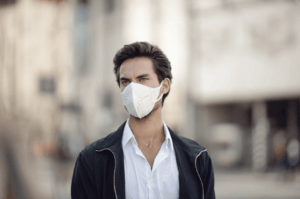
The AirPop Light SE and AirPop Pocket are two KN95, earloop masks that offer > 97% filtration. Both masks have similar strengths - such as high filtration and good breathability, but they differ in fitting mechanisms such as the seal.
4
Pros
- Silicon/memory foam creates a good seal around my nose
- Adjustable earloops on the Light SE
- Very breathable
- Resuable for 40 hours or more
- Inexpensive if used for their full lifespan
- Comfortable
Cons
- No headband attachment
- AirPop Pocket does not have adjustable earloops
- Light SE silicon may cause skin irritation for users with sensitive skin
I read the whole article and saw this at the very end. “Both masks are accredited with ASTM F3502-21 for the Workplace Performance Plus rating. However, these masks do not hold an N95, KN95, KF94, or equivalent rating.” At the beginning of the review I readd this
Mask Model KN95 Tests Intertek BSI
Airpop Pocket ≥ 98.7% ≥ 98.0% ≥ 98.6%
Airpop Light SE ≥ 98.8% ≥ 98.0% ≥ 98.5%.
IS THE AIR POCKET ONE THAT WILL STOP COVID 19 VIRUS PARTICLES????
AirPop Pocket Mask and Light SE are, KN95 certified and ASTM F3502-21 certified. Both test with 0.3 micron sized particles the same as N95 / FFP2 etc and the results show filtration performance above >97% so yes AirPop pocket will filter airborne particles that could contain SARS Cov-2
After digging around on their website (they post all the test data and certifications in the “Support” and “FAQ” sections), I think that AirPop masks are KN95 certified.
My situation: most of the KN95s and KF94s that I have tried leak air around my nose and fail the “glasses fogging up” test. I am looking for something with better fit for my face but equivalent filtration ability, and I am considering buying a few of these to try out because of the foam / silicone nose bridge pieces.
Here is the relevant Q&A that I found in the AirPop Health FAQ:
“Are your masks n95 or KN95 rated?
“No, our masks are not NIOSH N95 certified at this stage. Our masks are manufactured in the same factories as one of the leading N95 approved manufacturers and we adhere to the same rigorous material performance and quality controls as N95 masks.
AirPop masks exceed international mask material performance standards and European Community Barrier mask requirements in addition to being certified respirators in Asia.
“Yes, all AirPop masks are certified according to KN95 (GB2626: 2006/2019)”
(Source: http://support.airpophealth.com/en/support/solutions/articles/43000610040-faq-english . Accessed on January 7, 2021)
Correction: I accessed the AirPop FAQ on January 7, 2022.
Hi,
Simon and Matt are both right. The masks do indeed have a KN95 certification. That was my mistake and I have now updated the article to mention this.
Thank you for pointing out the error!